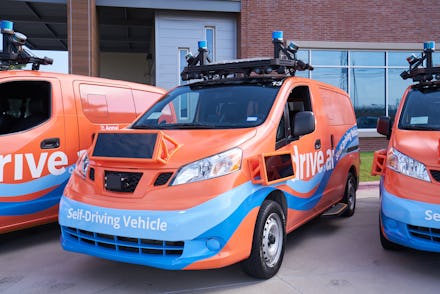Drive.ai brings its first driverless car service to Texas. Here’s how it’s keeping pedestrians safe.

Drive.ai has been working on its version of the driverless car to compete with vehicles by Uber, Google, Lyft and other ride-sharing car services. On Monday, the startup announced its cars would finally be available for public use.
Drive.ai’s pilot program has come to Frisco, Texas — making it the first company to bring a self-driving car service to the state. Lyft and Uber have introduced public driverless car options in other cities, such as Boston and Pittsburgh, Pennsylvania. Drive.ai’s cars can be summoned via an app.
Drive.ai’s launch comes just over four months after the first major driverless car tragedy. In March, an autonomous Uber vehicle hit and killed a pedestrian in Tempe, Arizona, despite a safety driver sitting behind the wheel. Many publications like New York Times, CNN and Wall Street Journal reported that this was the first death associated with a driverless car. Later that month, a Tesla owner died behind the wheel as his car was in self-piloting mode.
Drive.ai’s take on safety includes precautions that other companies use as well, like a human in the driver seat who can take over at any time. In addition, the Drive.ai team has enabled a remote monitoring feature they call telechoice. According to an email from a spokesperson with Drive.ai, the telechoice system allows Drive.ai employees to see in real time what the vehicle sees as it drives itself and make decisions for the vehicle when necessary. While employees are able to do basic functions like apply the car’s brakes, they can’t accelerate or assume full remote control of the vehicle.
Drive.ai’s plan is to eventually remove the human safety driver in the car with telechoice remaining enabled, so the team can help the car when necessary.
Drive.ai’s cars use tech similar to what’s found in other companies’ vehicles like light detection and ranging sensors and cameras on top of the vehicle (both help the car “see” the world around it). In addition to the car’s stark orange paint job, multicolor screens live on the outside of the vehicle to communicate the car’s intentions with those nearby.
“We’re focused on what it means to be safe beyond having a car that drives really safely,” Conway Chen, Drive.ai’s VP of business strategy, told Mic previously. “Our approach to safety is people-first, but not just passengers. It includes other motorists and even pedestrians.”